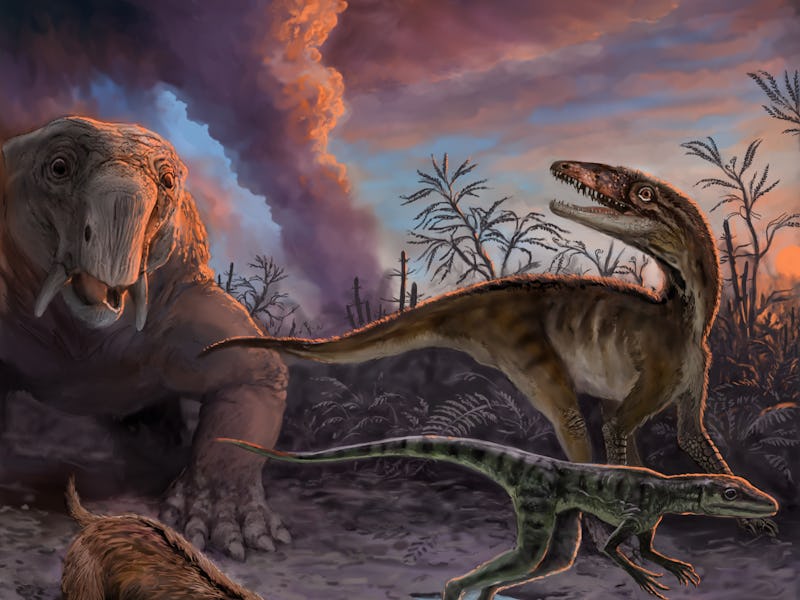Dinosaurs Evolved From Dinosauromorphs Faster Than Paleontologists Thought
Yet early dinosaurs may have still shared the world with their predecessors for millions of years.

The rise of the dinosaurs may have potentially happened faster than previously understood, a new study indicates. According to a paper published Monday by an international team of researchers investigating the Chañares Formation in northwestern Argentina, dinosauromorphs — the reptilian animals that evolved into dinosaurs — bulked up over less than five million years ago. Previously, paleontologists believe that dinosaurs took between 10 and 15 million years to emerge.
The group working at the Chañares Formation—an outcrop known to hold fossils of early dinosaurs and dinosauromorphs—dated the strata to the late Triassic Period (between 234 million and 236 million years old) by measuring radioactive isotopes found in volcanic ash within the rock layers, which determined that the layers (and dinosauromorphs within) are likely 5 million to 10 million years younger than previously assumed.
Researcher Adriana Mancuso (right) points to a volcanic ash layer (tuff) in the Chañares Formation that was sampled for radioisotopic dating.
Dinosauromorphs were similar to dinosaurs, save for some differences in bone structure and body type.
Dinosaurs possessed ball-and-socket hips and longer spines, which combined with forward-hinging feet to allow for stronger legs and superior locomotion—as well as an extra hole in the skull, permitting for better cooldown following enthusiastic activity.
However, as study co-researcher Randall Irmis, a paleontologist at the University of Utah explains, the dinosaur didn’t necessarily outduel its antediluvian dinosauromorph relations: “Although we see the first dinosaurs originating just 5 million years after early dinosauromorphs, their ecosystems were very similar; we don’t see a big shift ecologically when dinosaurs show up on the scene. It’s only millions of years later that we finally see dinosaur-dominated ecosystems.”
The discovery does, however, alter the understanding of events that led to the advent of the dinosaur. The standard theory held that the fossils found in the Chañares were tied to the devastation caused by the Great Permian Extinction, but as Irmis tells Inverse, “Our findings demonstrate that ecosystems on land didn’t suddenly change once dinosaurs appeared –there was no initial indication that this group of reptiles would be so successful later in the Mesozoic. Also, the re-dating of fossil assemblages like the Chañares Formation from “Middle Triassic” to Late Triassic means these fossils have less to do with the ecological recovery from the end-Permian mass extinction than we previously thought.”